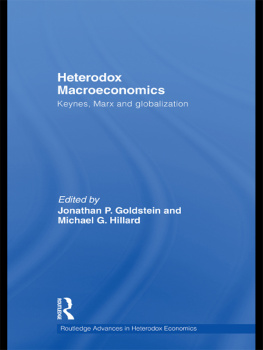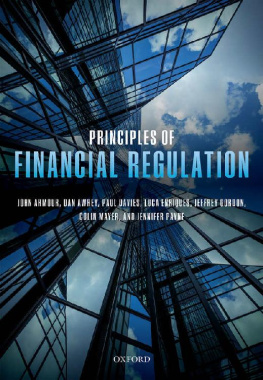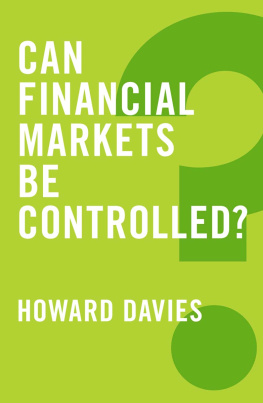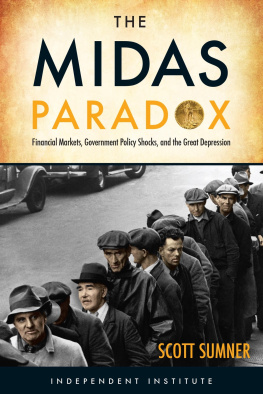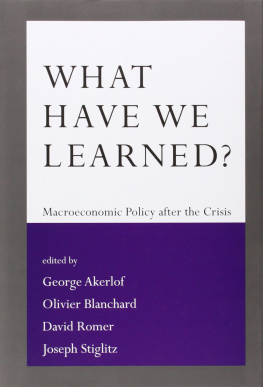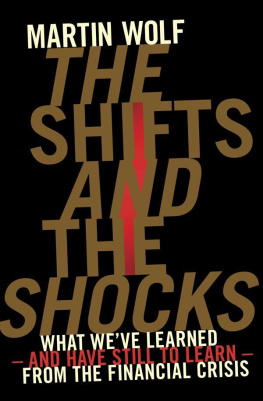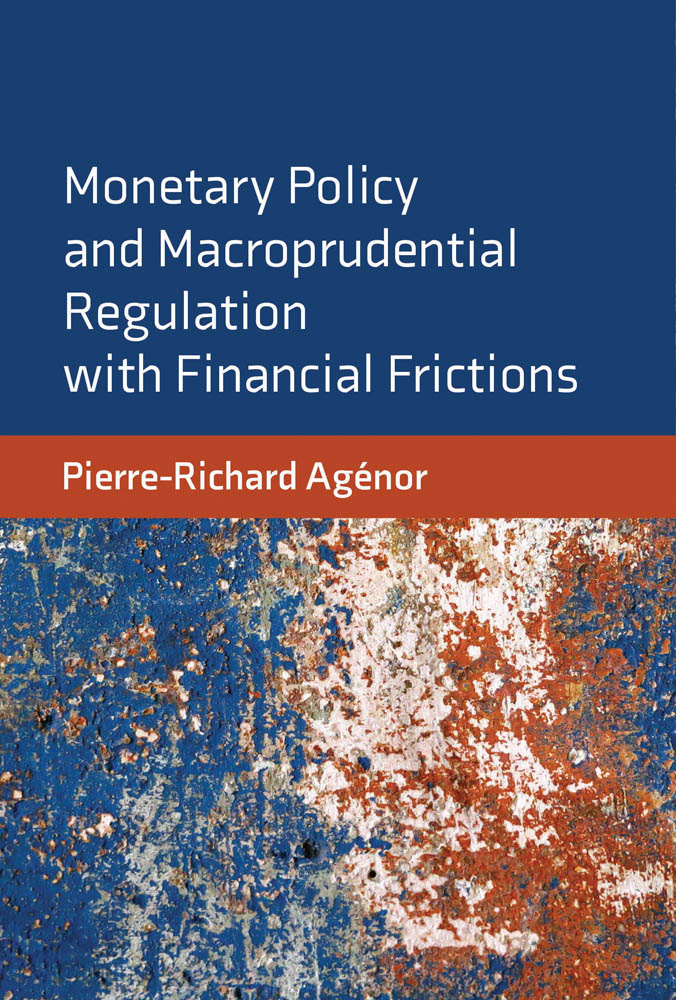All rights reserved. No part of this book may be reproduced in any form or by any electronic or mechanical means (including photocopying, recording, or information storage and retrieval) without permission in writing from the publisher.
Names: Agnor, Pierre-Richard, author.
Title: Monetary policy and macroprudential regulation with financial frictions / Pierre-Richard Agnor, School of Social Sciences, University of Manchester.
Description: Cambridge, Massachusetts: MIT Press, [2020] | Includes bibliographical references and index.
Subjects: LCSH: Monetary policyEconometric models. | Macroeconomics.
Contents
List of Figures
Brazil: composition of lending to firms, 19962012 (percent of GDP)
Source: Cabezon (2014).
Latin America: share of working capital needs financed with bank credit, 2006 and 2010
Source: Cabezon (2014).
Domestic credit to private sector, selected countries, 2000 and 2011 (percent of GDP)
Source: Bank for International Settlements staff.
Monetary and time-varying macroprudential policies: objectives, instruments, and transmission channels
Macroeconomic equilibrium with exogenous output
Macroeconomic equilibrium with exogenous output: Full diagram
Increase in the refinance rate with exogenous output
Increase in the refinance rate with exogenous output: full diagram
Increase in the refinance rate with exogenous output and constant premium
Increase in the required reserve ratio with exogenous output
Macroeconomic equilibrium with endogenous output
Increase in the refinance rate with endogenous output: weak cost channel
Increase in the refinance rate with endogenous output: strong cost channel
Increase in the required reserve ratio with endogenous output and no liability composition effect
Increase in the required reserve ratio with endogenous output and liability composition effect
Increase in the tax rate on loans or capital adequacy ratio with endogenous output
Exogenous output and land as collateral: increase in the refinance rate
Exogenous output and land as collateral: increase in the required reserve ratio
Macroeconomic equilibrium
Increase in the refinance rate: weak cost channel
Increase in the refinance rate: strong cost channel
Increase in the required reserve ratio
Structure of the core closed-economy DSGE-FF model
Positive productivity shock: impulse response functions
Note: The response of consumption, investment, output, and real house prices are expressed as percent deviations from their steady-state values. The response of the lending rate, the refinance rate, the expected real bond rate, the repayment probability, and the inflation rate are expressed as absolute deviations (or percentage points) from their steady-state values.
Negative credit spread shock: impulse response functions
Note: See note to .
Negative base policy rate shock: impulse response functions
Note: See note to .
Negative credit spread shock: impulse response functions, capital as collateral
Note: See note to .
Negative base policy rate shock: impulse response functions, full cost channel
Note: See note to .
Reserve requirements, refinance rate, and bank interest rates
Negative credit spread shock: countercyclical required reserve ratio. Note: The responses of consumption, investment, output, and real house prices are expressed as percent deviations from their steady-state values. The responses of the lending rate, the refinance rate, the expected real bond rate, the repayment probability, and the inflation rate are expressed as absolute deviations (or percentage points) from their steady-state values.
Negative credit spread shock: countercyclical tax on loans. Note: See note to .
Negative credit spread shock: augmented Taylor rule. Note: See note to .
Negative credit spread shock: relative broad loss function and optimal policy responses, required reserve ratio. Note: The diamond corresponds to leaning against the wind only, the cross to macroprudential regulation only, and the circle to coordination.
Negative credit spread shock: relative welfare and optimal policy responses, required reserve ratio. Note: See note to .
Negative credit spread shock: relative broad loss function and optimal policy responses, tax rate on loans. Note: See note to .
Negative credit spread shock: relative welfare and optimal policy responses, tax rate on loans. Note: See note to .
Negative credit spread shock: asymptotic standard deviations, Ramsey policy relative to simple macroprudential rule and coordination
Note: The cost of instrument manipulation is 0.4 in both graphs. The simple macroprudential rule relates to the tax on loans. Under coordination, the central bank reacts to credit growth. Optimal response parameters are those reported in . The numbers 5.68 and 4.33 refer to the relative volatility of the tax on loans when only the regulator acts and under coordination, respectively. The vertical scale in both graphs is set at a maximum of 1.5 to facilitate comparison.
Core DSGE model structure: closed economy with bank capital regulation
Bank capital, repayment probability, and the loan rate
Negative credit spread shock: impulse response functions with endogenous and exogenous excess bank capital. Note: The responses of consumption, investment, output, real house prices, required capital, excess capital, and total capital are expressed as percent deviations from their steady-state values. The responses of the lending rate, the refinance rate, the expected real bond rate, the repayment probability, the inflation rate, the bank capital return, the leverage ratio, and the capital adequacy ratio are expressed as absolute deviations (or percentage points) from their steady-state values.
Negative credit spread shock: relative welfare and optimal policy responses. Note: The diamond corresponds to leaning against the wind only, the cross to macroprudential regulation only, the square to the Nash equilibrium, and the circle to coordination.
Macroeconomic equilibrium: fixed exchange rates
Fixed exchange rates: increase in refinance rate (weak cost channel)
Fixed exchange rates: increase in required reserve ratio
Fixed exchange rates: increase in tax rate on loans
Macroeconomic equilibrium: flexible exchange rates
Flexible exchange rates: increase in refinance rate
Flexible exchange rates: increase in required reserve ratio
Flexible exchange rates: increase in tax rate on loans
Production structure in the core open-economy DSGE-FF model



